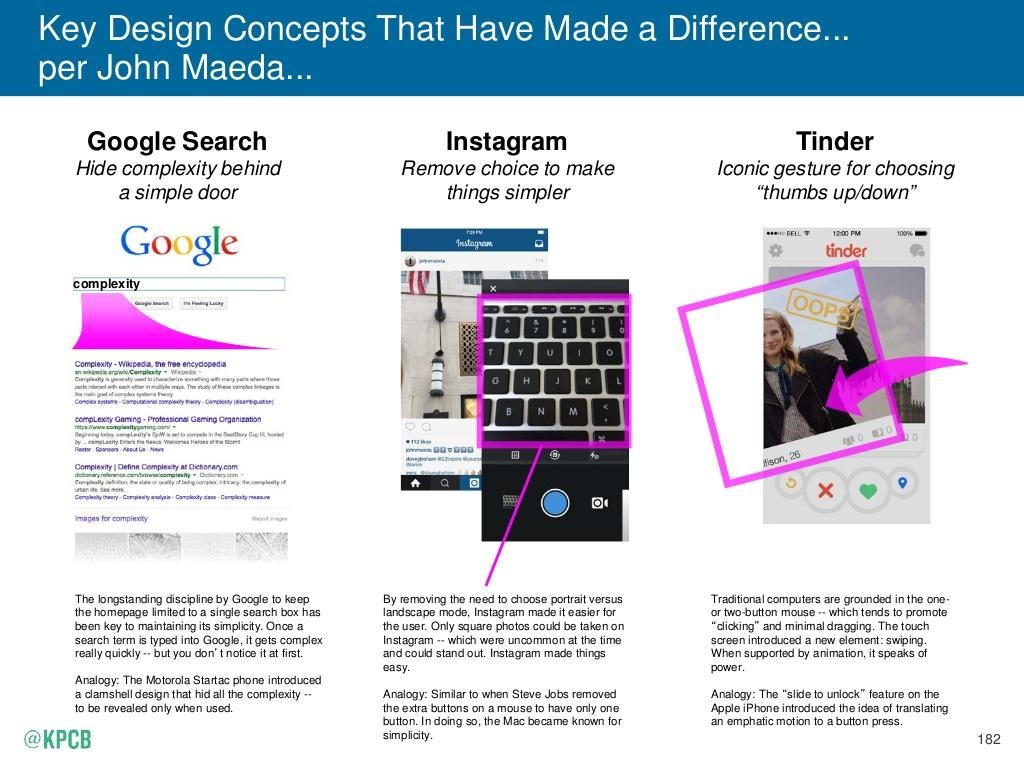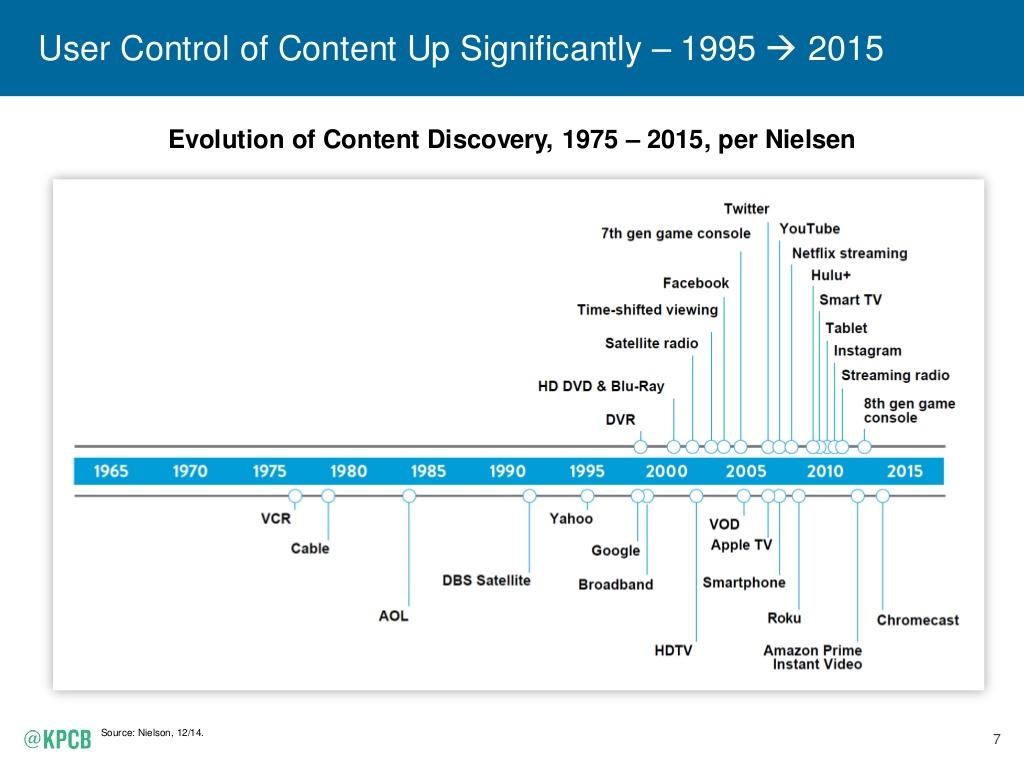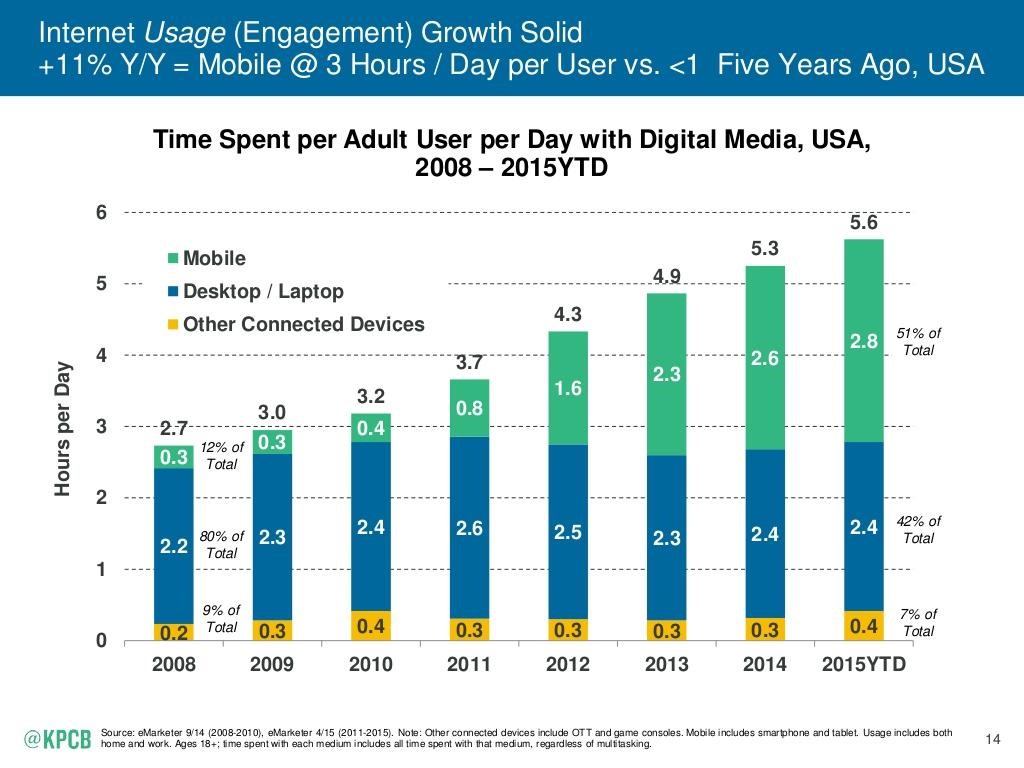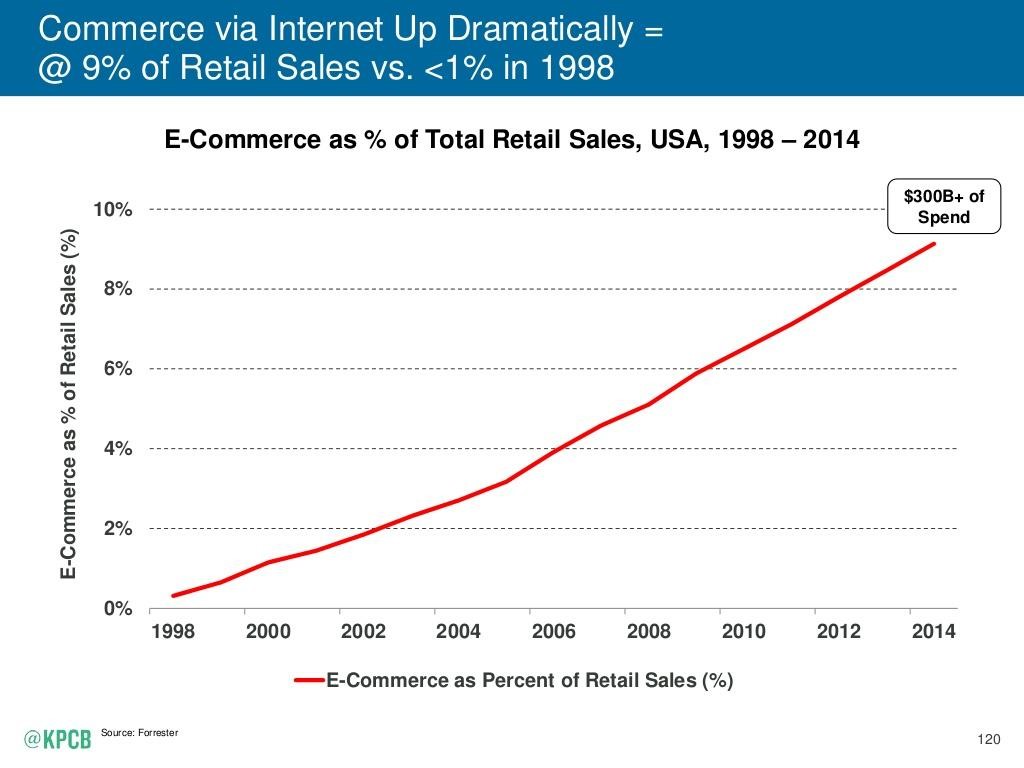It’s been 20 years since KPCB released its first Internet Trends report, and in that time, the number of Internet users has increased from 35 million to more than 2.8 billion. While for the most part, last year’s lessons remain consistent today – surprise! Go mobile – the 2015 report presents some insights that offer marketers a glimpse into a new Internet, with quickly evolving rules of engagement.
#1 User experience can actually help differentiate your brand

New concepts in user experience design are re-shaping consumer habits and changing how people engage with brands online. Whether it’s removing cash or card payments in Uber, swiping right (or left) on Tinder, or reducing choice to make Instagram easier to instantly post photos, simplifying the user experience can instill a set of habits that actually help consumers identify with your brand.
#2 User control of content is “recreating the Internet”

In a world where Google, Amazon and Facebook dominate the top 15 global public internet companies, it’s no wonder users are more in control of their content than ever. That trend continues apace with the likes of Chromecast and 8th generation game consoles that are integrating platforms and devices, and vying to be your first and only point of access to the Internet. Critically, marketers will need to adapt quickly not only to where, but how, they engage with users – and user control will need to be increasingly top of mind.
#3 Mobile (still) matters

Global Internet use has slowed. The exception lies in developing world markets with lower spending power and infrastructure, and this is due in no small part to the rate of smartphone penetration. While Internet use has decelerated, mobile use of digital media has grown consistently, reinforcing the idea that marketers must continue to focus on designing optimal mobile experiences.
#4 Some sectors more web-friendly than others

The Internet’s impact on the consumer sector is complete, according to this year’s report – but other sectors remain relatively closed to the web’s full potential. Education, healthcare and government, in particular, lag when it comes to leveraging web development to change behaviour and improve outcomes. Point is, these sectors–no matter how risk averse–are ripe for change. Marketers who understand web design and user experience research will be instrumental in helping them adapt.
#5 E-commerce is changing consumer expectations

The growth of mobile-enabled platforms, such as Uber and Amazon, combined with local delivery options, are enabling consumers to buy at the moment of interest. This expectation will only rise and become more entrenched in the consumer mindset over time. The challenge of acquiring users and building a loyal audience of repeat customers, however, will remain constant—and that will mean finding new and ever more seamless ways to steer customers from your content toward the virtual check-out counter.